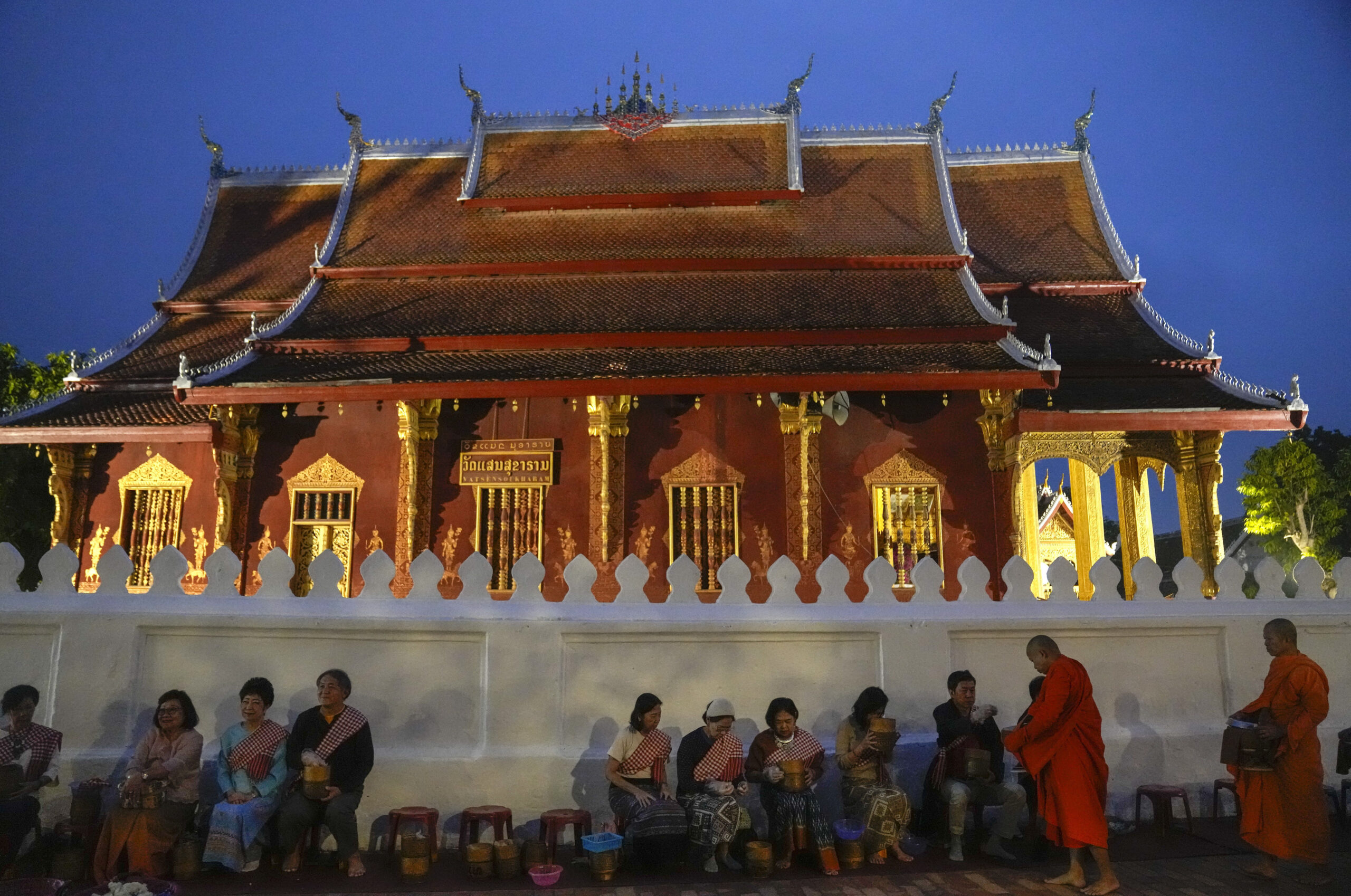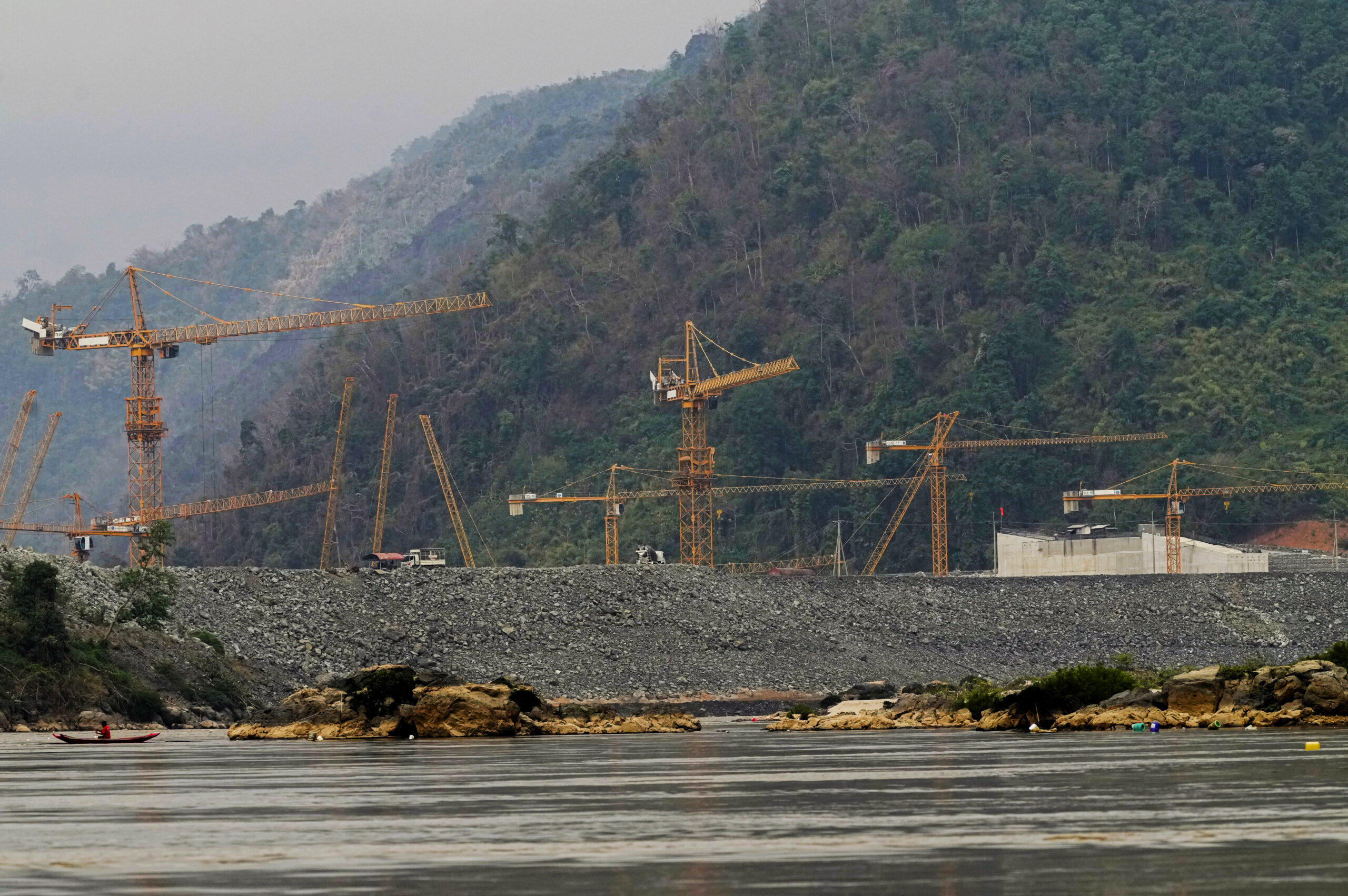LUANG PRABANG, Laos (AP) — Landlocked Laos doesn’t have the famous beaches of its neighbours to attract tourists, but instead relies on the pristine beauty of its mountains and rivers and historical sites to bring in visitors.
The crown jewel is Luang Prabang, a UNESCO World Heritage Site where legend has it that Buddha once rested during his travels. It brings all the elements together, with its mix of historic Laotian and French colonial architecture on a peninsula at the confluence of the Mekong and the Nam Khan rivers.
But a multibillion-dollar dam project underway 25 kilometres upstream has prompted concerns that it could result in the city losing its UNESCO status, and broader questions about what the government’s ambitious plans to build multiple dams across the Mekong will do to the river, the lifeblood of Southeast Asia.
“When the Luang Prabang Dam is complete, and it’s already well under construction, the river is going to trickle into a dead body of water,” said Brian Eyler, director of the Washington-based Stimson Centre’s Southeast Asia Programme and its Energy, Water and Sustainability Program.
“The people going to Luang Prabang as tourists to see the mighty Mekong and see how the Lao people interact with the river, all those interactions are going to be gone — all the fishing, meaningful local boating and commerce done by locals on relatively small boats will end.”

The dam is also being built near an active fault line, and though studies of the design conclude it could withstand an earthquake, local residents are worried.
For Som Phone, a 38-year-old tour boat operator and lifelong Luang Prabang resident, memories of the 2018 collapse of another dam in Laos that killed dozens and displaced thousands, blamed on shoddy construction, are still fresh.
“Many people died,” he said.
Luang Prabang is not yet on UNESCO’s list of endangered World Heritage sites, but the Paris-based agency has outlined a series of concerns, including the protection of historic buildings and the effect of the dam project on protected wetlands and the city’s riverbanks, and is awaiting a report back from Laos.
“Previous studies carried out by the authorities have not yet established whether or not the project could have a negative impact,” UNESCO said in an emailed response to questions from The Associated Press.
The issue is to be discussed by UNESCO in July during its meetings in New Delhi, but in the meantime, the construction continues.
The site is a hive of activity, with backhoes tearing shovelfuls of deep red soil from the hills along the river, which are then dumped along with loads of stone into the Mekong to form a foundation.
The dam site is within view of the Pak Ou caves, home to hundreds of Buddha statues and a popular side trip for tourists visiting Luang Prabang.
Once completed, the project is expected to displace more than 500 families and impact 20 villages.
Luang Prabang’s World Heritage Office referred queries on the status of its response to UNESCO to the Ministry of Information, Culture and Tourism, which referred questions to the Foreign Ministry.
The Foreign Ministry refused to comment on the telephone and did not respond to the emailed questions it requested.
Nestled among the mountains of northern Laos, Luang Prabang was the capital from the 14th to the 16th century before it was moved to Vientiane.
Its historic center has numerous Buddhist temples, a former royal palace, buildings from the French colonial era and a mountaintop shrine built around what is said to be Buddha’s footprint. Several picturesque waterfalls are within a short drive from the city.
A bustling night market boasts stalls selling traditional Lao handicrafts, locally made whisky, as well as trinkets made from fragments of some of the millions of American bombs dropped on the country during the Vietnam conflict in a campaign to try to disrupt communist supply lines. At a vibrant morning market, vendors sell brightly colored peppers, spices, fish and more exotic foods.
Many visitors arrive on small river cruise boats, or by train on a new high-speed rail system, built with funding from China as part of its Belt and Road project, which connects Vientiane with the Chinese city of Kunming.
It was named a UNESCO World Heritage Site in 1995 for its “unique, remarkably well-preserved townscape” combined with its “natural spaces located in the heart of the city and along the riverbanks and wetlands.”
The Luang Prabang dam is one of nine that Laos plans across the Mekong. Two others already exist, and Laos has also constructed dozens of dams on Mekong tributaries, moving at a rapid pace over about the last 12 years as part of an ambitious government plan to make the country the “battery of Southeast Asia” by supplying its neighbours with electricity.
Laos has relied heavily on foreign funding, primarily from China and Thailand, for the construction, part of the reason it now owes a crippling debt to China that it is struggling to repay.
“When we think about the Laos’ ‘battery of Southeast Asia,’ program, that was really Laos flinging its doors wide open to foreign investors to come in and build dams,” said Eyler, who also co-leads the Stimson Centre’s Mekong Dam Monitor programme.
Approval of dam projects moves quickly, often without thorough consideration of their impact, and the electricity is largely exported to Laos’ neighbours like Thailand, he added.
“This dam won’t generate a lot of power for Laos, it’s going to power new shopping malls in Bangkok,” Eyler said of the Luang Prabang project. “So there’s a mismatch of those who are negatively affected and those who are beneficiaries.”
The first mainstream dam was the Xayaburi dam, just downstream from Luang Prabang, which began operating in 2019 and has already affected the city, said Philip Hirsch, a professor emeritus of human geography at Sydney University.
“It’s already become a lakeside town rather than a riverside town…due to the effects of the Xayaburi dam downstream,” he said.
Plans are to allow a constant flow of water through the new Luang Prabang dam, as a so-called run-of-the-river dam, but the waters will be further starved of sediment, affecting traditional fishing and farming of the banks.
In a report commissioned by Laotian authorities, British consultancy CBA concluded that “key issues relating to catastrophic flooding due to dam failure and changes to water levels on the Mekong have been addressed,” but seismologists and others remain concerned about it being built near an active fault line.
“When you have a reservoir 78 kilometres long and you’ve raised the water level about 40 metres, you’d just have a wall of water and given how low-lying some of the parts of Luang Prabang are along the river, it’d be devastating,” Hirsch said.
The Mekong River Commission, an organisation formed for cooperation on issues regarding the river by the countries through which it flows — Cambodia, Laos, Thailand and Vietnam — said its technical review of the project showed ground movement in recent earthquakes was “significantly below the design limit” of the dam.
In a written response to questions from the AP, it noted that Laos’ government has established an independent panel to monitor the issue of dam safety.
The Mekong River supports the largest inland fishery in the world, and the river commission also examined the dam’s potential impact on hydrology, sediment, water quality, fish and other issues.
It concluded that the dam, when taken into consideration with others already built or planned by Laos, could cause harm downstream in Thailand, Cambodia and Vietnam, confirming concerns those countries have voiced.
“In isolation, the potential transboundary harmful effects due to the Luang Prabang hydropower project may not be substantial,” the river commission said. “But on top of the other existing and planned development it may have considerable impact on the other riparian states.”
For tourist Barbara Curti who came to Luang Prabang to see “the real people, the real life” of Laos, a new dam could significantly impact the appeal of the city as a destination.
“For me, it’s a problem, the construction of the dam, because they would change too much of the life and the real character of the city,” said the 46-year-old Italian, sitting on the banks of the Mekong with a friend.
“In my opinion, we have to preserve the traditions.”





